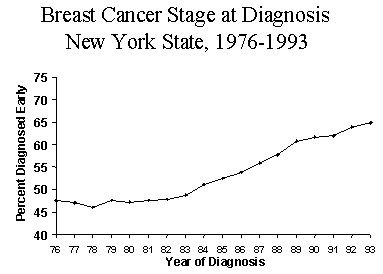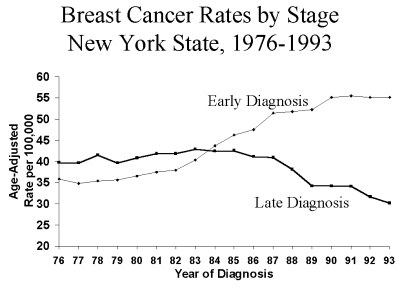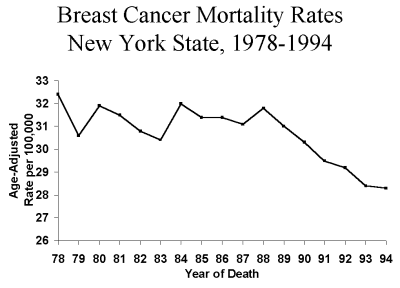The Influence of an Increase in Screening on Incidence And Mortality Rates - Statistics Teaching Tools
Can screening utilization rates in my county affect cancer incidence rates?
Screening detects cases of disease that were previously unknown. Increased use of a screening test for a given disease will, therefore, increase the number of cases detected over a given period of time. This will initially cause the rate of disease in an area to increase. Much, but not all, of this increase may be in early stage disease. Once the increases in screening use level off, the rate of disease will often level off, as long as other factors causing disease have not changed.
For example, the percent of breast cancer patients who have their cancer diagnosed at an early stage has increased 36% since 1982. The rate of early stage breast cancer has increased while the rate of late stage breast cancer has decreased. This change is believed to be partly due to heightened awareness of the disease and increased utilization of mammography.



What is the affect on mortality rates?
As screening increases, more people survive due to early detection, and the mortality rates decline. The mortality rate for breast cancer has decreased since 1988 by 11%. When mammography screening was first introduced, it was estimated that if all women age 50 and older receive breast cancer screening, the mortality rate would decrease by 30%.